- About Us
- Advertise
- Editorial
- Contact Us
- Terms and Conditions
- Privacy Policy
- Do Not Sell My Personal Information
© 2025 MJH Life Sciences™ and Dental Products Report. All rights reserved.
Roundup: Brush up on Bases and Liners
Rounding up some of the base and liner materials from around the dental industry.

While often used interchangeably, dental base and liner materials do have a few slight differences. A liner usually refers to a thin layer of material—no larger than 0.5 mm—placed on the surface of a preparation that helps protect the tooth from the outside environment.1 Bases, on the other hand, are usually placed in a thicker layer—1-2 mm and are used to provide thermal or chemical protection for the pulp.2 Bases also help redistribute stress from the restoration across the dentin’s surface.2
The original use of these materials was to protect the pulp, eliminate sensitivity, and allow the tooth to cover.3 Advances in dental materials science and continued research suggests that bases and liners might not be as necessary as they once were.3 However, they still have a place in your armamentarium for use on a case-by-case basis.
References
- Arandi NZ. Calcium hydroxide liners: a literature review. Clin Cosmet Investig Dent. 2017;9:67-72. Published July 13, 2017. Accessed February 10, 2023. doi:10.2147/CCIDE.S141381
- Bases and liners. Pocket dentistry. Accessed February 10, 2023. https://pocketdentistry.com/7-liner-and-bases/
- Gividen S. Bases and liners: Can’t live without them—or can we? Dental Economics. December 1, 2018. Accessed February 10, 2023. https://www.dentaleconomics.com/science-tech/article/16384943/bases-and-liners-cant-live-without-them-or-can-we
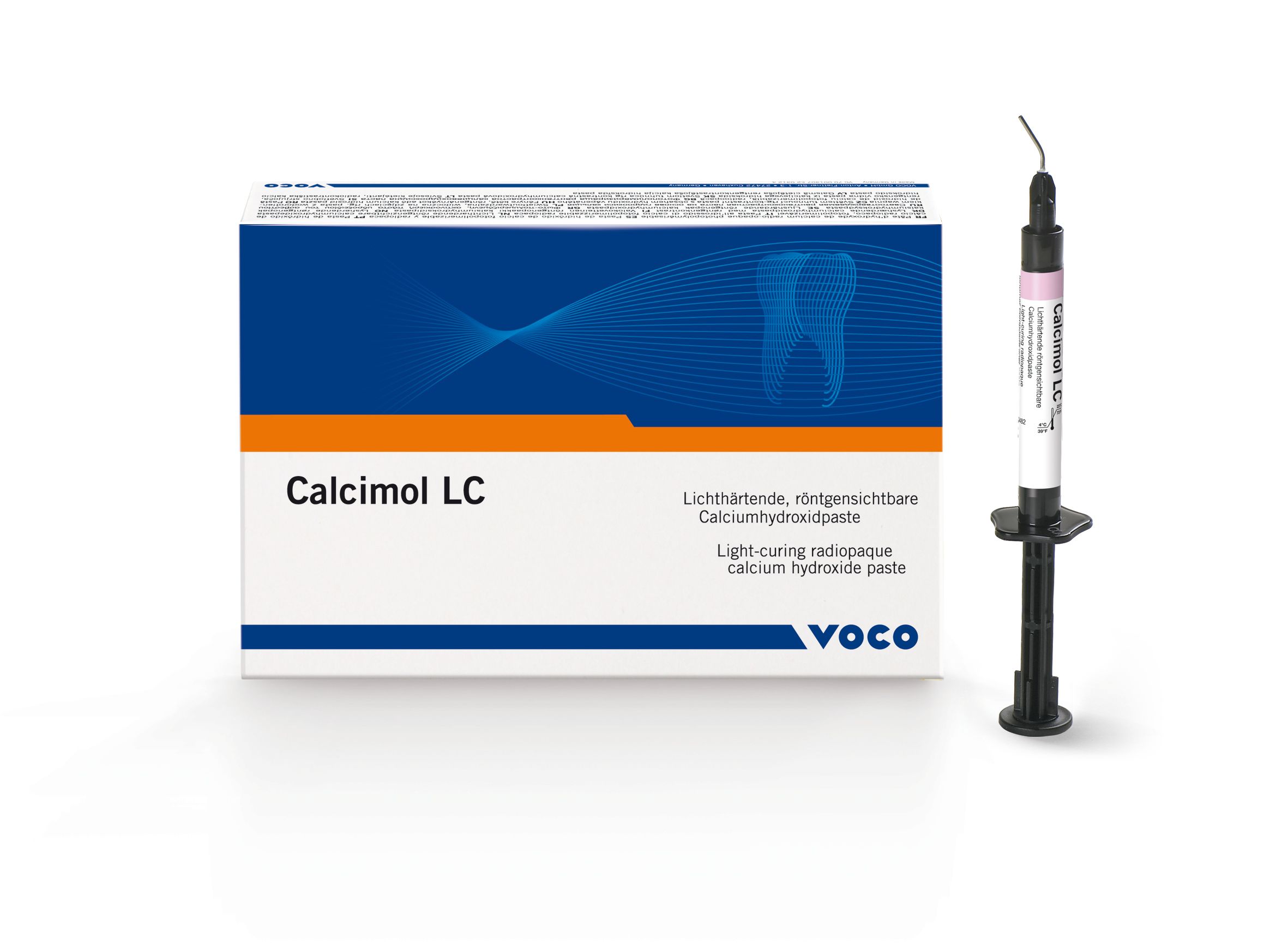
Calcimol LC
Calcimol LC is a light-cured, resin modified calcium ion-releasing base/liner and pulp-capping material. It’s designed to virtually eliminate sensitivities by creating a sealed barrier to the pulp and is suited for pulp capping and as a base under all restorative materials and cements. Calcimol LC’s calcium ion release promotes hydroxyapatite and tertiary dentin growth and its high pH level (9.5-11) supports healing and has an antimicrobial effect. The base/liner also features a high compressive strength for a solid foundation, is radiopaque, and is acid resistant. Its Flow on Demand feature ensures Calcimol LC stays where you apply it. Its NDT (non-dripping technology) syringe allows for easy placement without waste.
888-658-2584 | vocoamerica.com
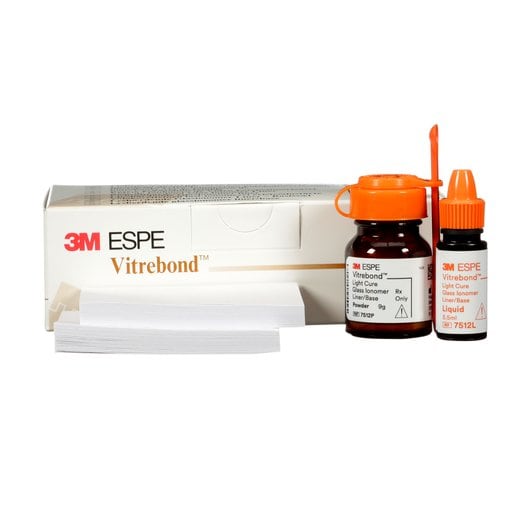
Vitrebond™ Light Cure Glass Ionomer Liner/Base
Designed for under direct and indirect restorations, Vitrebond forms a strong bond to dentin, sealing the tooth to reduce the incidence of microleakage, which helps reduce post-operative sensitivity. It is said to produce zones of inhibition against bacteria commonly found in the oral cavity in-vitro. Vitrebond’s sustained fluoride release helps protect the tooth long after the restoration is complete.
800-634-2249 | 3m.com/dental
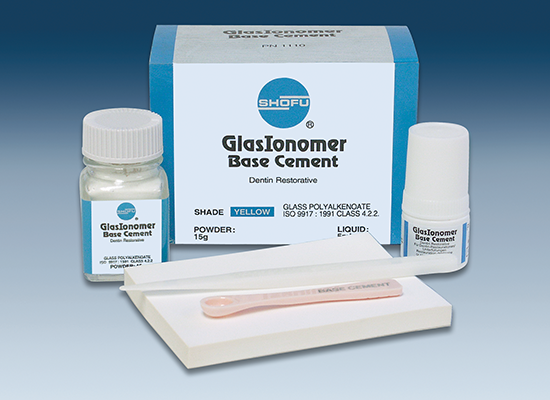
GlasIonomer Base Cement
A high compressive strength base cement formulated for dentin replacement, GlasIonomer Base Cement is indicated for use as a supportive base under stress-bearing amalgam, composite, and porcelain restorations. It features a compressive strength 147 MPa, a high level of radiopacity, and low solubility. It is designed for biocompatibility and chemically bonds to dentin and enamel. Its high fluoride release reduces the occurrence of secondary caries.
800-827-4638 | shofu.com/en

Prisma VLC Dycal I Base/Liner
Prisma VLC Dycal calcium hydroxide base/liner is a 1-component, rigid-setting, visible light cured material. It is designed for use in direct and indirect pulp capping and as a protective base/liner under dental adhesives, varnishes, filling materials, cements, and other base materials. The material is said to have superior physical properties that are minimally affected by phosphoric acid, and possess a low water solubility. it is designed to not inhibit the polymerization of acrylic and composite restorations.
844-848-0137 | dentsplysirona.com
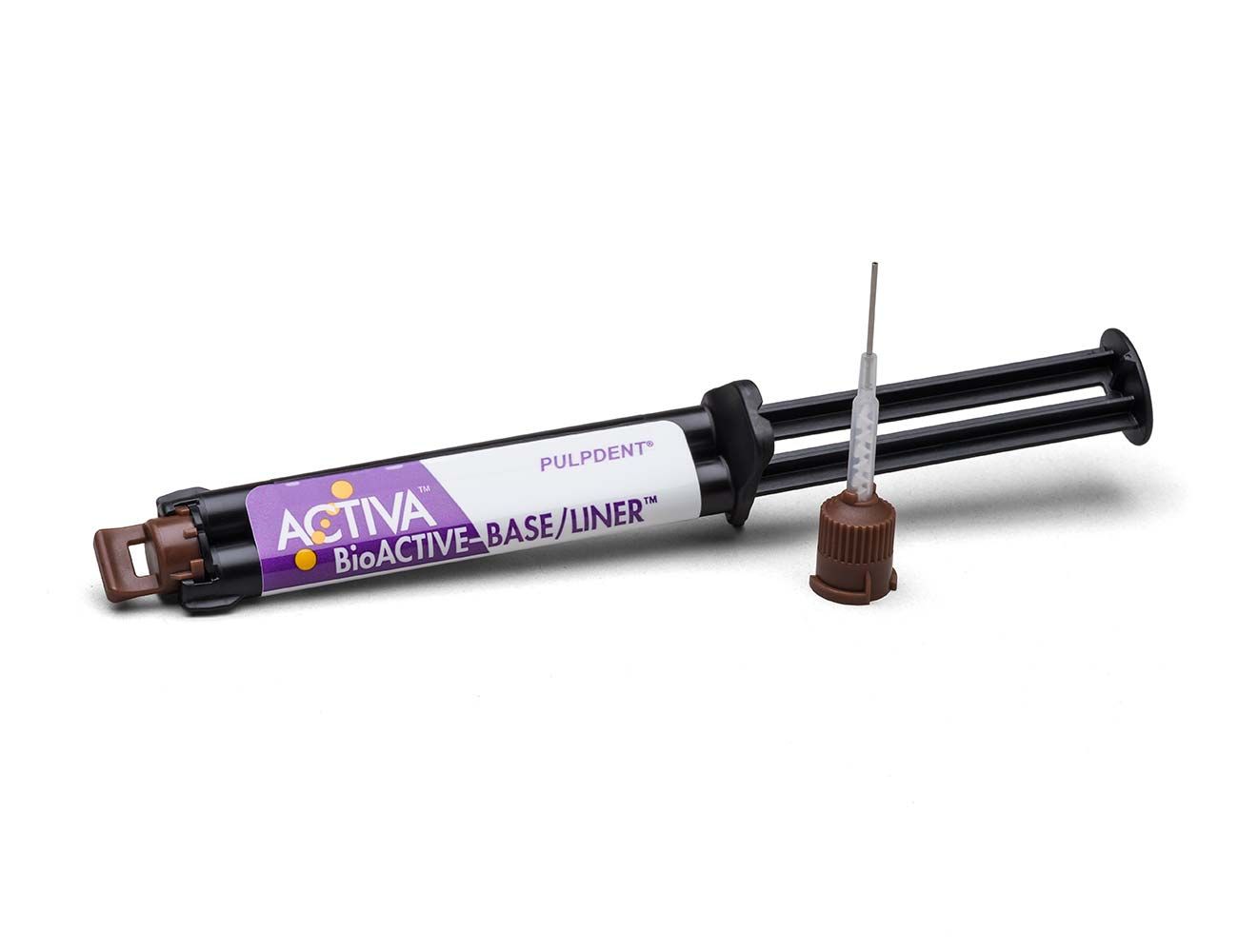
ACTIVA™ BioACTIVE-BASE/LINER
ACTIVA is designed to deliver all the advantages of glass ionomers in a strong, resilient resin matrix that will not chip or crumble. It chemically bonds to teeth, seals against microleakage, and releases calcium, phosphate, and fluoride. It is said to be more bioactive than glass ionomers, and more durable and fracture resistant than composites, glass ionomers, and RMGIs. ACTIVA also features an ionic resin matrix, a shock-absorbing resin component, and bioactive fillers that mimic the physical and chemical properties of natural teeth. It releases and recharges with calcium, phosphate, and fluoride ions, delivering long-term benefits and better oral health care for your patients. ACTIVA contains no Bisphenol A, No Bis-GMA, and no BPA derivatives.
800-343-4342 | pulpdent.com
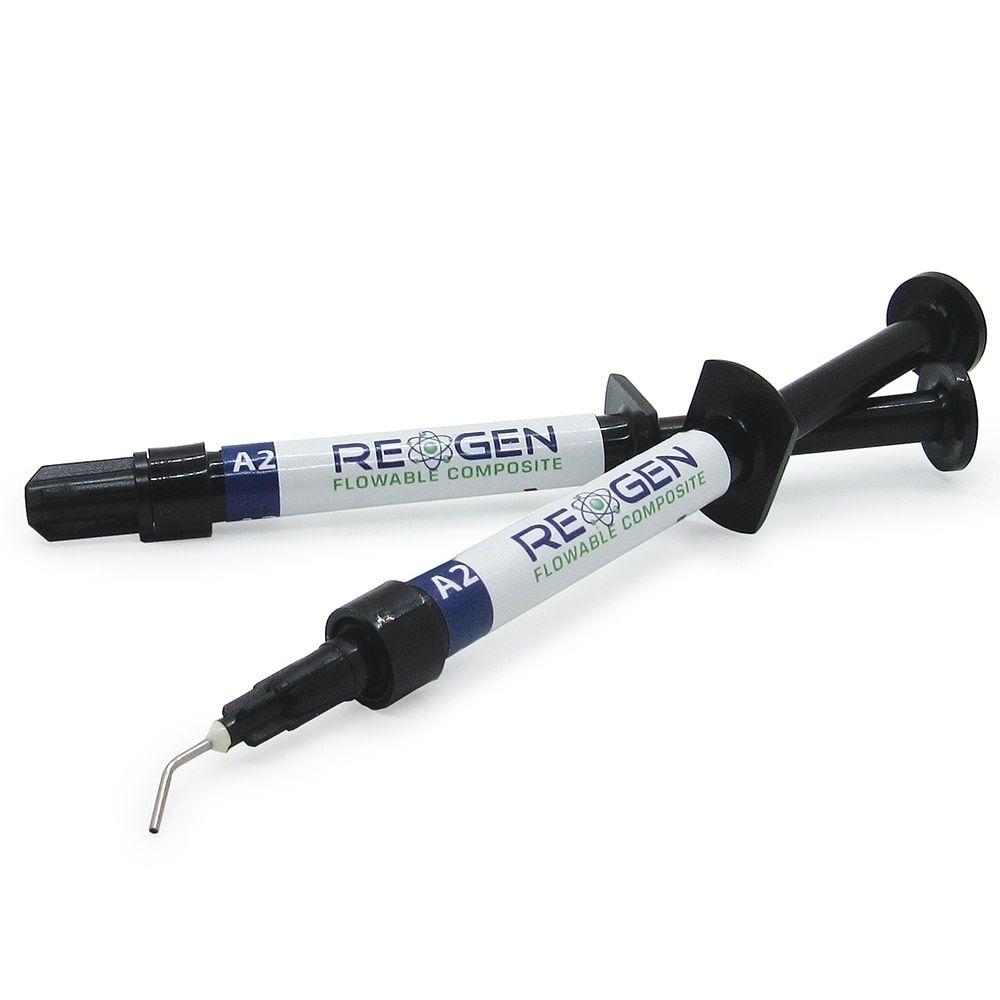
RE-GEN™ Flowable Composite Liner
Indicated for use as a lining material in the base of large restorations, RE-GEN Composite Liner is formulated with a unique combination of thickness and flow in the same material. It is designed to provide strength and toughness while offering a high level of radiopacity. The use of Bioglass within this material promotes the regeneration of hydroxyapatite and provides an antimicrobial function to prevent recurrent caries and secondary decay. RE-GEN releases calcium, phosphate, and fluoride to maximize the potential for remineralization of tooth structure. It features a radiopacity of < 300%, and a compressive strength of 357 MPa and it contains no Bisphenol A and no BPA derivatives.
877-418-4782 | vistaapex.com

GC Fuji LINING LC Paste Pak
GC Fuji LINING LC Paste is the first light-cured, glass ionomer lining material available in a paste-paste formula that is used as a liner or a base under composite resin or amalgam restorations. It has a high compressive strength, minimal polymerization shrinkage, and extremely low solubility. GC Fuji LINING LC Paste Pak minimizes sensitivity and provides long-term fluoride release. It bonds well to the tooth structure and composite, creating the ideal dentin substitute. This product also flexes and absorbs the stresses caused by the polymerization shrinkage, thermal expansion, and contraction of composite materials.
800-323-7063 | gcamerica.com

Cavitec™
Cavitec is a eugenol and zinc oxide liner. It can be used as a base under composite or amalgam fillings that can be completed immediately. Cavitec will not discolor composite fillings. Cavitec is also useful as a temporary stopping or filling agent and can be used for the temporary cementation of jacket crowns. When used as a temporary stopping, it breaks away cleanly when you are ready to insert the filling or crown.
800-537-7123 | kerrdental.com

Temrex Cement
Available in liquid and powder form, Temrex temporary cement is suitable for use as a base under amalgam, silicate, and gold inlays; as sedation of deep, sensitive cavities and crown preparations; and as temporary cement for long-span permanent bridges on abutment preparations with short or inadequate retention form. Temrex features a 4100 psi of compressive strength, It inhibits microbial growth and minimizes microleakage. Its soothing characteristics sedate and help heal injured pulp in crown and cavity preps, and is designed to set hard rapidly so it can be used as a base under amalgams.
800-645-1226 | temrex.com

Tetric EvoFlow
etric EvoFlow is a flowable universal composite for the anterior and posterior regions. It is characterized by its distinctive chameleon effect and excellent handling properties. EvoFlow can be applied very precisely and is therefore suitable for creating minimally invasive anterior restorations and for use as a liner. It is universally suited for enamel shades for small defects and cervical restorations. Dentin shades feature low translucency for concealing stains and for fulfilling esthetic expectations. Tetric EvoFlow enables clinicians to precisely apply the material due to its thixotropic consistency.
800-533-6825 | ivoclar.com

RGI Baseliner LC
RGI Baseliner is a light cured, glass ionomer base. It is self-adhesive to tooth structure without the use of a primer. It features high flexural strength and a high level of fluoride. RGI Baseliner is indicated for use under composite, amalgam, ceramic, and metal restorations. It is HEMA-free and radiopaque.
800-372-4346 | henryschein.com
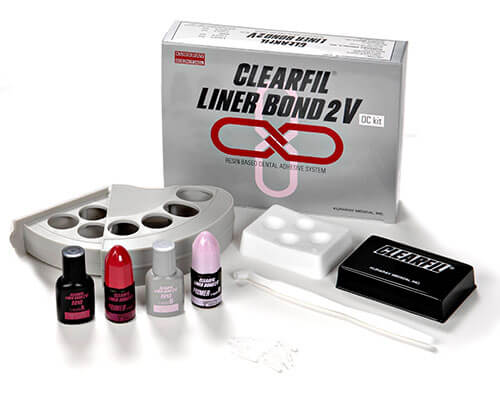
CLEARFIL LINER BOND 2V
CLEARFIL LINER BOND 2V is a dual-cure adhesive system with multiple indications. Its self-etching primer mildly etches and enables collagen fibers to maintain their natural CLEARFIL’s self-etching primer also allows for effective 1-step conditioning of cut enamel and dentin without rinsing. The bonding liquid of CLEARFIL completely fills the thin etched layer, resulting in high bond strength to dentin, enamel, and porcelain. CLEARFIL is indicated for the treatment of hypersensitive and/or exposed root surfaces; as a cavity sealant in the pretreatment of indirect restorations; bonded amalgam restorations; and cementing inlays and onlays made of porcelain or composite using composite resin cement.
800-879-1676 | kuraraydental.com

 Download Issue: Dental Products Report February 2023
Download Issue: Dental Products Report February 2023

